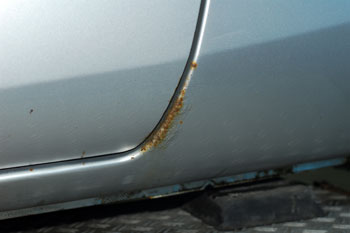Winter’s here, and in Connecticut, we’ve already seen a dusting of snow fall to the ground. With that powdery fluff comes trucks adding salt to the roads – essential when you need to get around.
 But, for as crucial as salt is, many drivers don’t realize how much damage it does to your car. The substance gets embedded into parts of your car and, with time, causes corrosion and extensive wear and tear. As a result, certain parts fail, and you’ll end up needing to spend more on maintenance.
But, for as crucial as salt is, many drivers don’t realize how much damage it does to your car. The substance gets embedded into parts of your car and, with time, causes corrosion and extensive wear and tear. As a result, certain parts fail, and you’ll end up needing to spend more on maintenance.
What Can Happen?
Salt, when sprinkled onto the road, lowers water’s freezing point, which then makes ice melt. For drivers, there’s less of a chance you’ll be sliding around and getting into accidents once the snow starts to fall.
Yet, as salt particles form a coating on your vehicle’s underside, the following may happen:
- Rusting – Vehicles starts to rust after repeat exposure to salt.
- Rusting and corrosion may lead to hydraulic brake leaks and subframe damage. Generally, damage underneath is harder to detect.
- As you drive, brakes may fail, or have their lines leak or break.
- Interior parts of your car may get damaged.
- When you put your car into a garage, turn it on to warm up, or don’t clean it through spring, the heat speeds up corrosion, so damage occurs sooner.
What Can You Do?
The best ways to minimize salt damage are as follows:
- Don’t drive right after the road has been salted. Your car will pick up more salt.
- In fall, have an auto body shop pre-treat your car underside with an oil-based spray.
- Add a coat of wax and sealant to your car’s exterior.
- Make it a priority to wash your car once a month. Afterwards, have it waxed again.
- After the season, make a maintenance appointment to check for and repair any salt-related damage.
Whether you’re requesting pre-treatment, waxing, or maintenance, Da Silva Auto Body is here to help. For these services and more, contact our Naugatuck location today to schedule an appointment.




